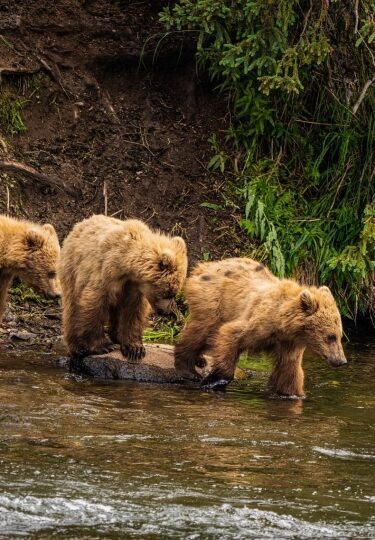Alaska is synonymous with incredible wildlife. Where else could you spot a black bear foraging on a rocky beach, observed by a bald eagle in a tree, a pod of whales cruising just offshore? The animals in Alaska are the reason many people visit this pristine wilderness, reconnecting with nature and seeing creatures thriving in their native habitat.
Whether you explore the island-strewn Inside Passage in search of whales and dolphins or hike the tundra and forests of Denali National Park, you’ll be surrounded by Alaskan wildlife. Some creatures are more elusive than others, but once your eyes have adjusted to the mountains, forests, and glaciers, you’ll be astonished at what you can see. All it takes is a little patience, a good set of binoculars, and the eagle eyes of a local guide.
Whether you like your wildlife fluffy, feathered, or scaled, here are some of the most iconic animals in Alaska to look out for.
Moose
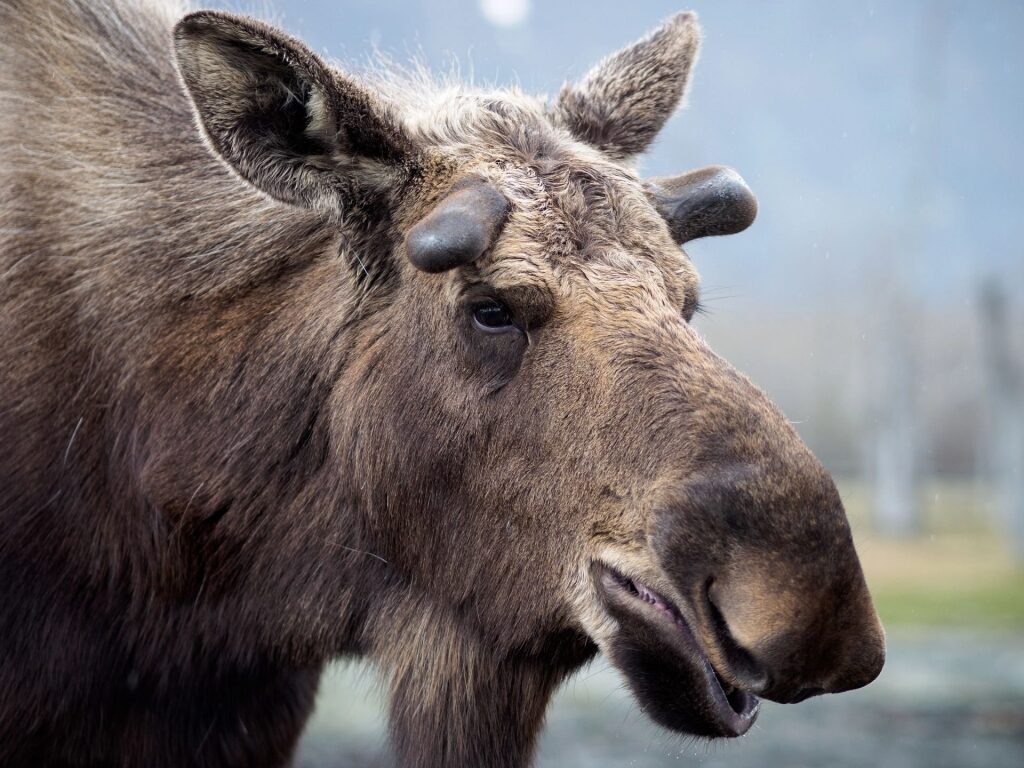
Moose
The moose is one of the state symbols that Alaska is known for. This majestic creature is actually the largest member of the deer family. A full-grown adult male—identified by its huge antlers—can weigh 1,600 pounds and stand six feet tall. Females are smaller, and in early summer, you may spot them with their calves, which have a reddish-brown coat.
You’ll see moose in Denali National Park, browsing on birch, willow, and aspen. They’re relatively common here and considered one of the Big Five, along with caribou, Dall sheep, wolves, and grizzlies.
If your travels take you to Skagway, meanwhile, you can get closer to a variety of Alaskan animals at the Kroschel Wildlife Refuge, near Haines, a 45-minute scenic boat ride away. Steve Kroschel, often dubbed “The Dr. Doolittle of Alaska”, has taken in animals found orphaned or abandoned in the wild, including moose, and offers tours of the refuge with a chance to “meet” some of his residents.
Bald Eagle
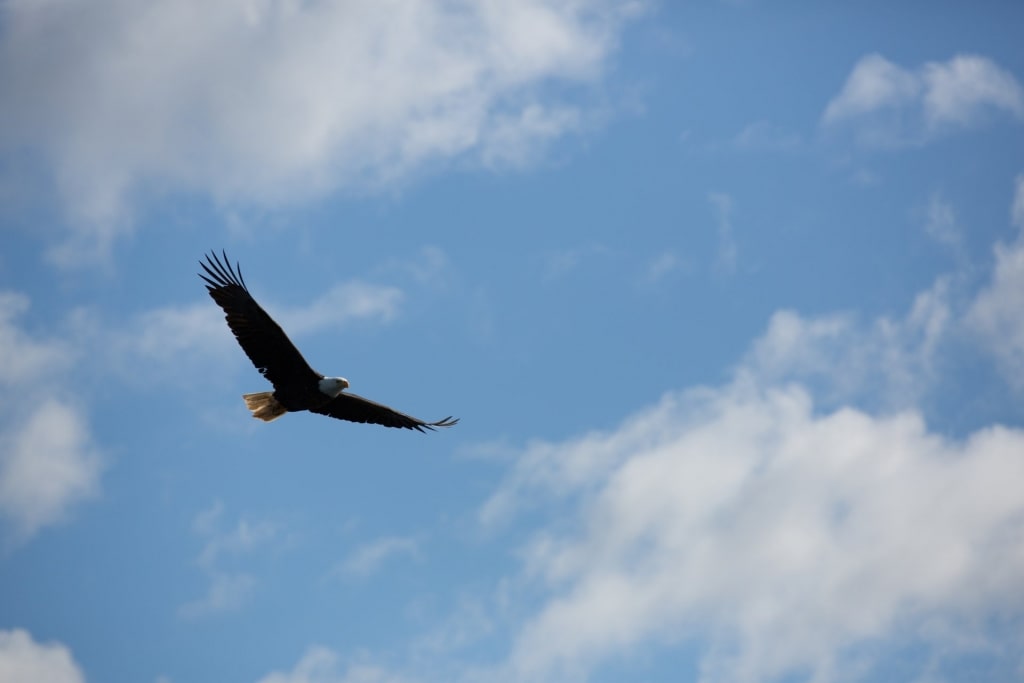
Bald eagle
The national emblem of the United States since 1782, the imperious-looking bald eagle is Alaska’s biggest bird, with a wingspan of up to seven and a half feet. Like all raptors, the eagle is a highly successful predator, feeding on fish and small mammals. There’s a large concentration of eagles in Alaska, where abundant food supports a population of some 30,000 birds.
Bald eagles are not actually bald, of course; their plumage is dark brown, with a snowy white head and bright yellow beak. The word “bald” is a derivation of an old English word, “balled”, which means “white”.
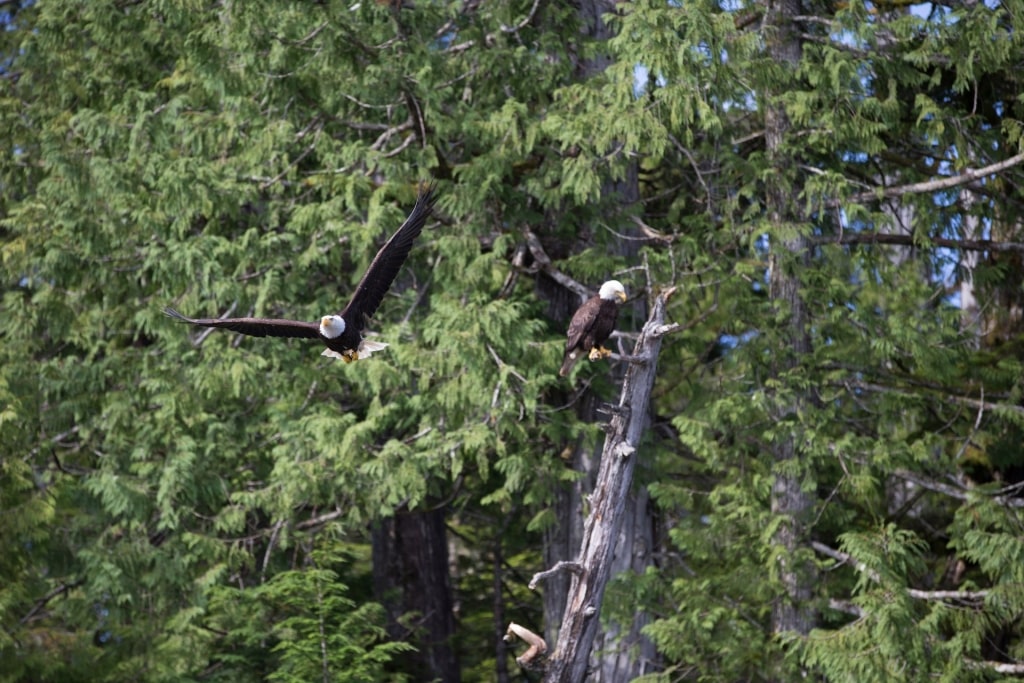
Bald eagle
You’ll see bald eagles perched in trees or on rocks. If you’re lucky, you could spot one swooping down to the surface of the water to seize a fish in its knife-like talons.
To get really close to these beautiful birds and learn about their life in the wild, visit the Alaskan Raptor Center in Sitka. This wonderful facility rehabilitates eagles and other birds of prey, including falcons, hawks, and owls, that have suffered various mishaps in the wild.
These Alaskan birds even re-learn the skill of flying in a special flight training center. Many are released back into the wild once they’ve healed, and a visit to the center, supporting its conservation effort, is a heart-warming experience.
Caribou
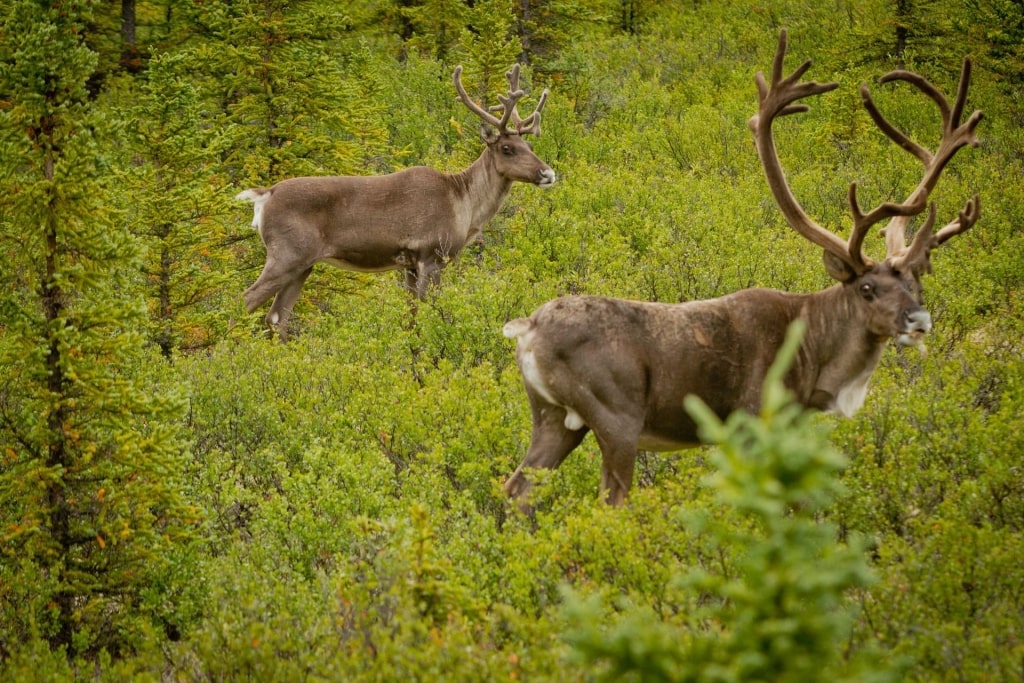
Caribou
Caribou, known in Europe as reindeer, are herd animals that forage the tundra for food. Their summer menu includes willow, sedge, and even mushrooms, changing to lichens and berries during fall in Alaska. Caribou live in large herds, 32 in Alaska, to be precise, comprising some 950,000 individuals.
These Alaskan animals are well adapted to life on the tundra. Their large, concave hooves are ideal for padding across the snow that blankets the ground in winter, and they use their antlers for digging through the snow for lichen. They’re also adept swimmers, again thanks to their big hooves, and will happily cross rivers in summer.
Both males and females have antlers, although those of the males are larger and more dramatic-looking. The animal’s coat is brown, with a white neck and rump, and grows dense in winter. Caribou, or reindeer, don’t have red noses, though, as the popular Christmas song suggests.
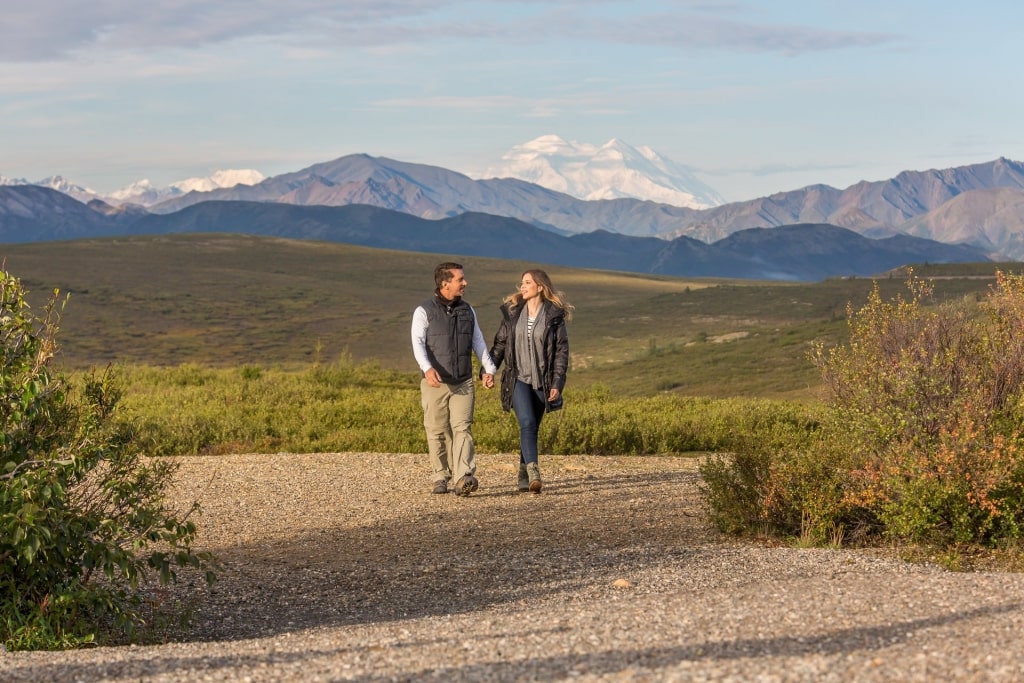
Denali National Park and Preserve
You should spot caribou in Denali National Park and Preserve, although there are no guarantees as the herds are constantly on the move. If a group happens to cross a road in front of you, it’s an impressive sight. You could be waiting for some time as thousands of animals stream around you.
Humpback Whale
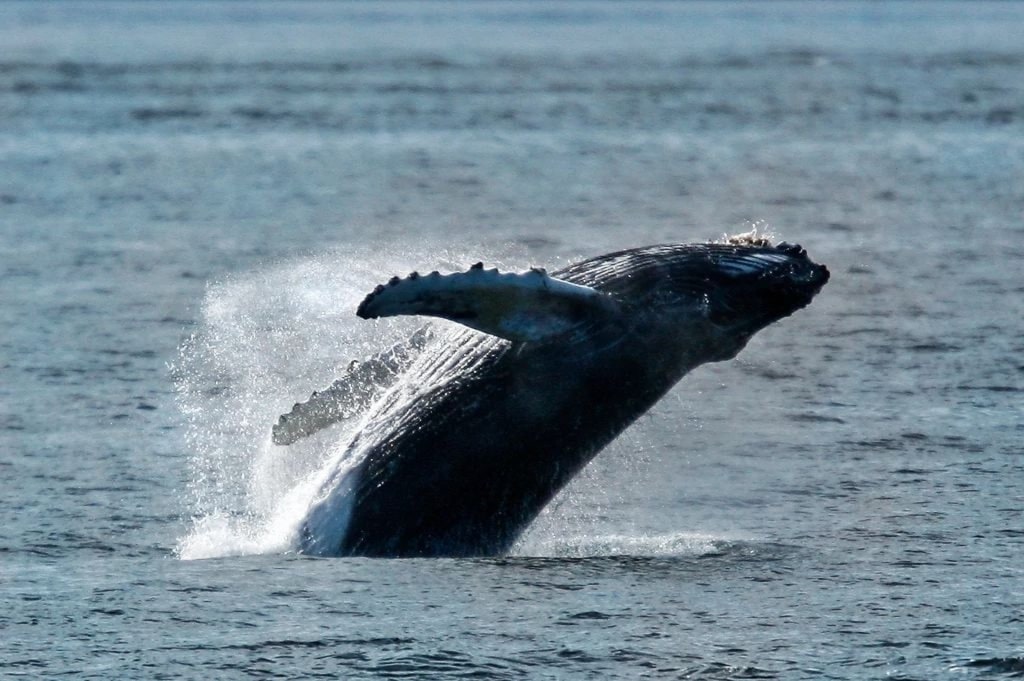
Humpback whale
Humpback whales are common all along the West Coast, but this doesn’t lessen the thrill of spotting them in the wild. You’ll identify them by their blow and their constant activity. These are the most acrobatic of the whale family, regularly breaching, or leaping right out of the water, and crashing down again with an almighty splash.
You might see them spy-hopping, too. This is when the whale steadies itself underwater with its tail and pokes its head vertically out of the water to have a look around.
Take a whale-watching trip with a local expert and you could get really close to these wonderful creatures. Humpbacks are particularly plentiful around Icy Strait Point, a rich feeding ground that also attracts orcas, porpoises, and sea lions, but you’ll spot them all along the coast
Read: Alaska Whale-Watching Cruises: Everything You Need to Know
Orca
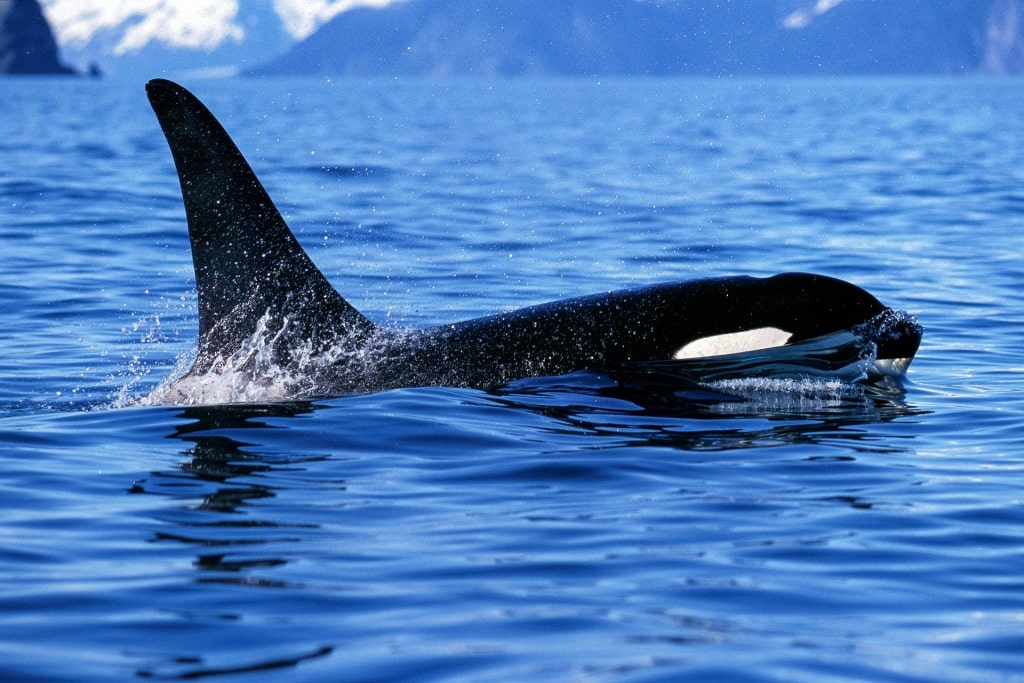
Orca
The distinctive black-and-white orca is actually a dolphin; it’s the largest of the dolphin family and a highly successful hunter. Orcas can be spotted the length of the Pacific Northwest coast and deep into Alaska, where there are rich pickings in terms of food. You can detect them by their tall, black dorsal fin and, as you get closer, the graphic black-and-white markings, individual to every animal.
Orcas usually swim in pods, so with luck, you will see several together. One of the best spots for seeing orcas in the wild is Resurrection Bay, on the Kenai Peninsula. In June, dozens of orca feast on king salmon. Otherwise, the often silky-smooth water of the Inside Passage is another great location for an orca encounter.
Black Bear
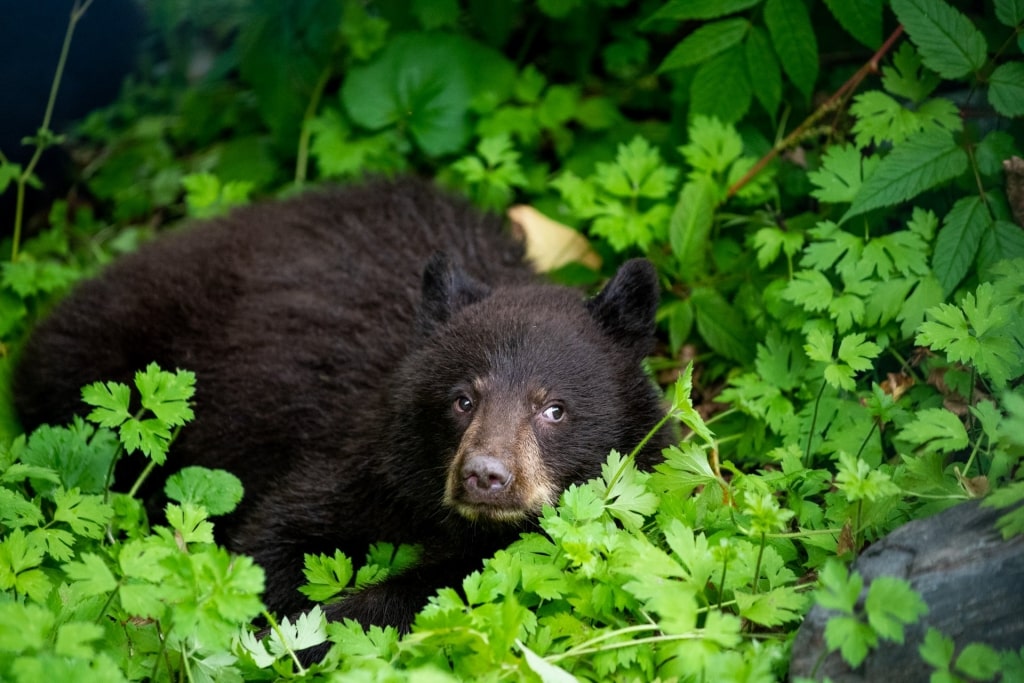
Black bear
To many, a glimpse of a bear is the ultimate prize on any Alaskan wildlife-spotting expedition. As many as 100,000 black bears are estimated to live in the state’s dense forests, so you might see one shambling along a rocky beach, foraging, or snoozing in the branches of a tree.
Black bears are distinctively different from their much bigger cousins, brown bears, which are also known as grizzlies. The black bear is relatively small, standing a mere 60 inches from nose to tail. The bear has reasonable vision and hearing, but a finely-honed sense of smell, the sense it relies on most for hunting.
Bears are active all summer in Alaska, all the more so during salmon spawning season, when they come down to rivers teeming with fish to feed and fatten up for the long winter.
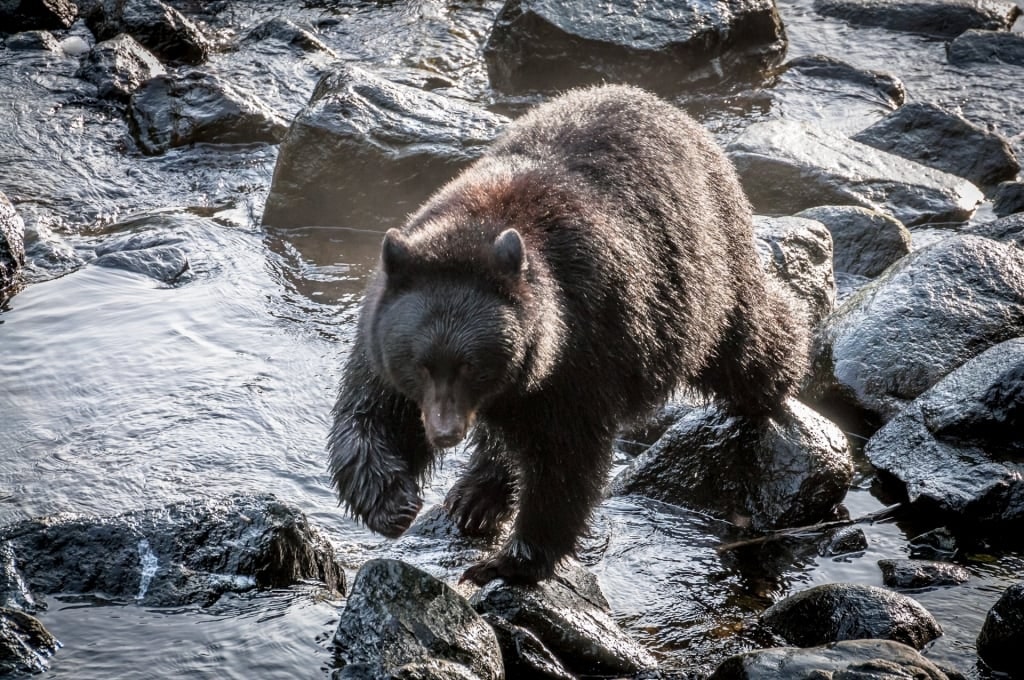
Black bear
One of the best places to spot black bears is Ketchikan, Alaska’s salmon capital. Where there are fish, there will be bears, so head to Herring Cove where a guide will lead you along forest trails to some of the best locations from which to watch the feast. You’ll be amazed to observe the animals plucking silvery fish straight out of the water.
Steller Sea Lion
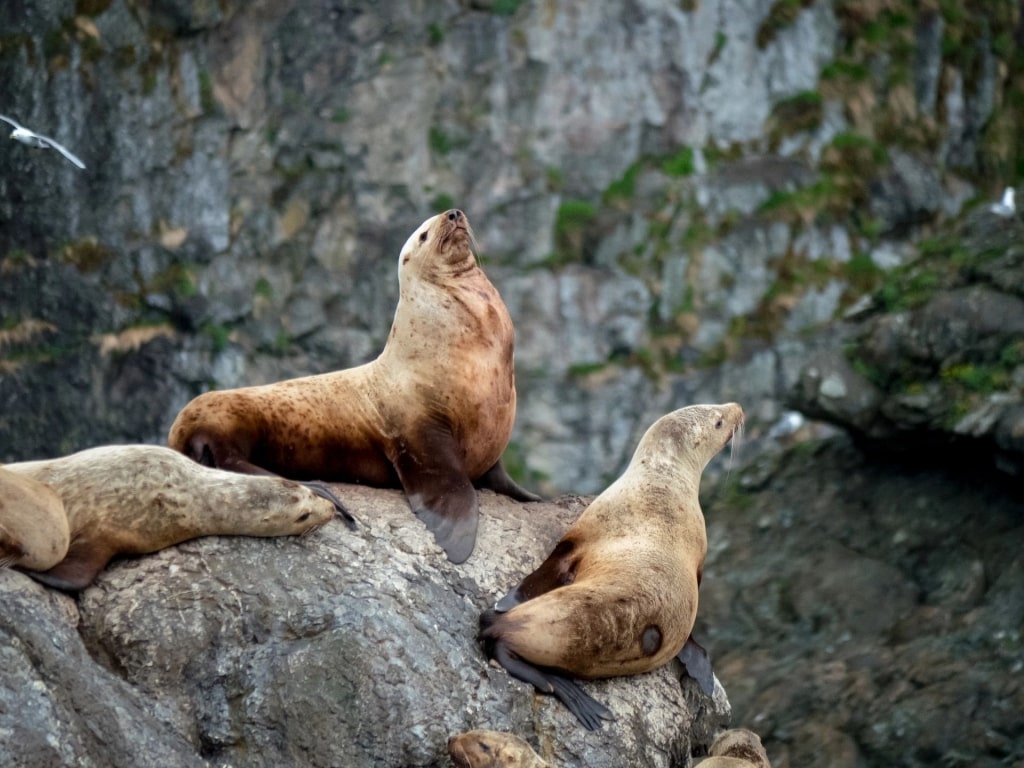
Steller sea lion
There’s something endearing about sea lions. It’s almost comical when they’re flopped lazily on rocks in the summer sunshine, though they are incredibly powerful and graceful in the water.
The Steller sea lion is one of the most common species in Alaska. They’re found in large harems of females, often on remote, rocky islands, where they are safe from predators. The big-eyed pups are almost black but will turn a buff-colored brown as they molt at the end of their first summer. A colony of Steller sea lions can make a fair amount of noise: the mature individuals roar and the pups bleat, almost like lambs.
The serene Kenai Fjords, near Seward, are the ideal place to spot Steller sea lion colonies. Paddle a kayak or take a sightseeing boat through this pristine environment, on the lookout for whales and otters as well as sea lions.
Dall Sheep
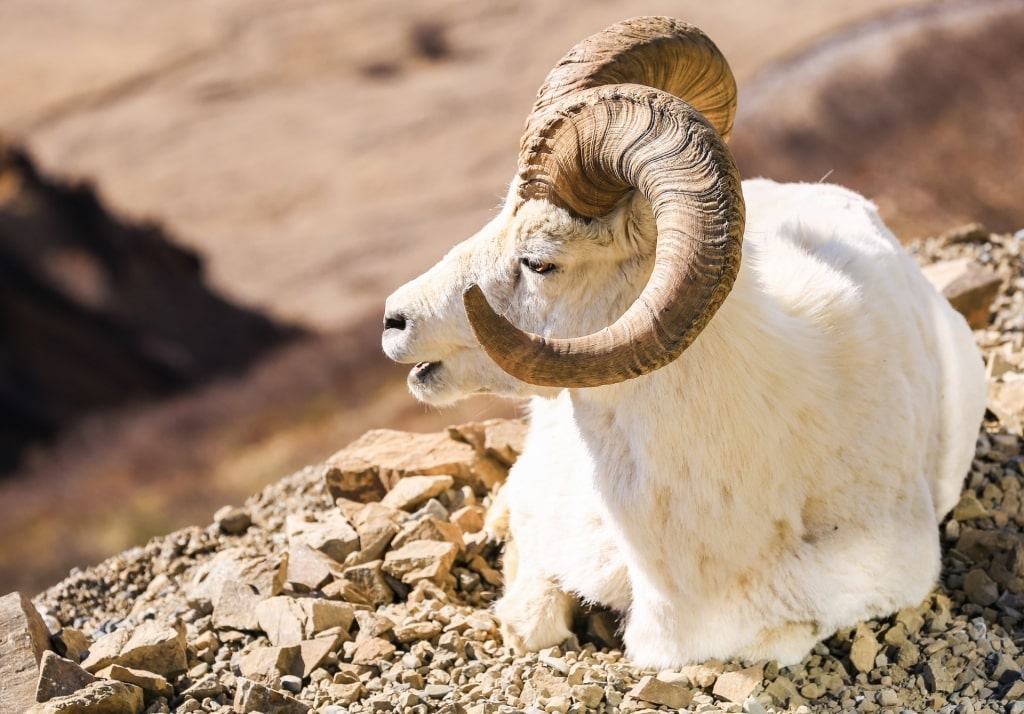
Dall sheep
The mountain-dwelling Dall sheep is a far more impressive-looking creature than its domesticated relative. It’s distinguished by its luxuriant white coat and massive, curled horns, much bigger in males than females.
You’ll spot Dall sheep in alpine pastures and along ridges in the Kenai and Chugach Mountains, as well as Denali National Park, where they’re considered one of the “Big Five” animals to check off your list.
They’re nimble, somewhat skittish creatures. These animals are always poised to flee predators, taking refuge on high rocks and crags. You’ll need to travel high into the Alaskan mountains for a chance of a sighting, but the rewards are great. The Dall sheep’s white coat makes it relatively easy to spot from a distance.
Brown Bear
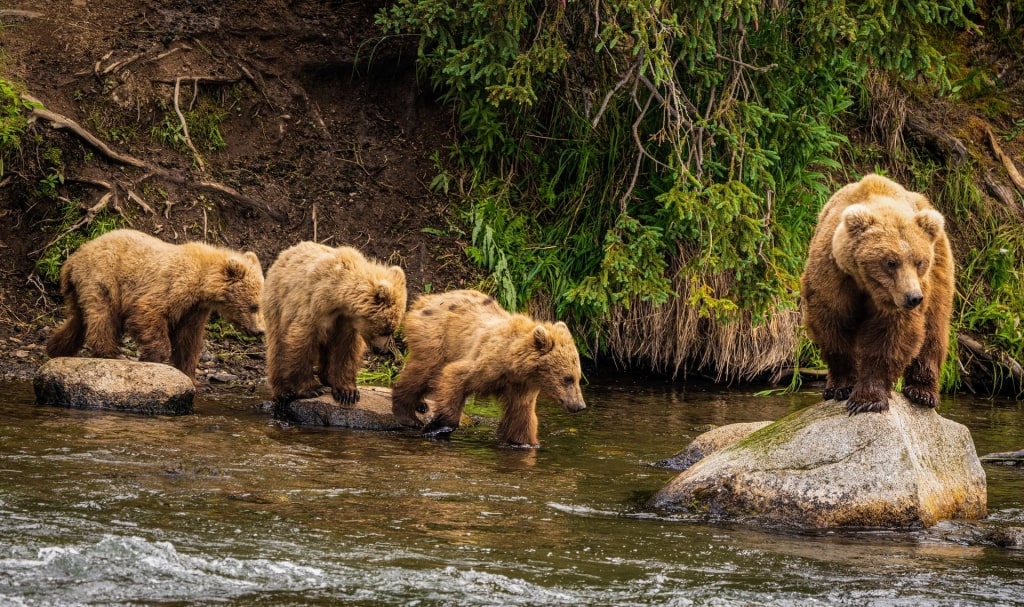
Brown bear
Most commonly known as a grizzly bear, the brown bear can be found all along the coast of southern Alaska, where the vegetation is rich and the salmon abundant. Both provide an essential source of food all summer.
Brown bears have long claws, helpful for digging up roots, although they’re not efficient tree climbers like their black cousins. They’re not necessarily brown, either; while some individuals have a dark brown coat, others may be a pale blond.
Brown bears have a varied diet, ranging from salmon to berries, grasses, and other mammals. They may prey on the young of moose and caribou and are also well-known scavengers around Alaskan towns and campgrounds, using their excellent sense of smell to detect food. Grizzlies tend to be solitary in nature but will cooperate when gathered together around salmon spawning rivers or whale carcasses.
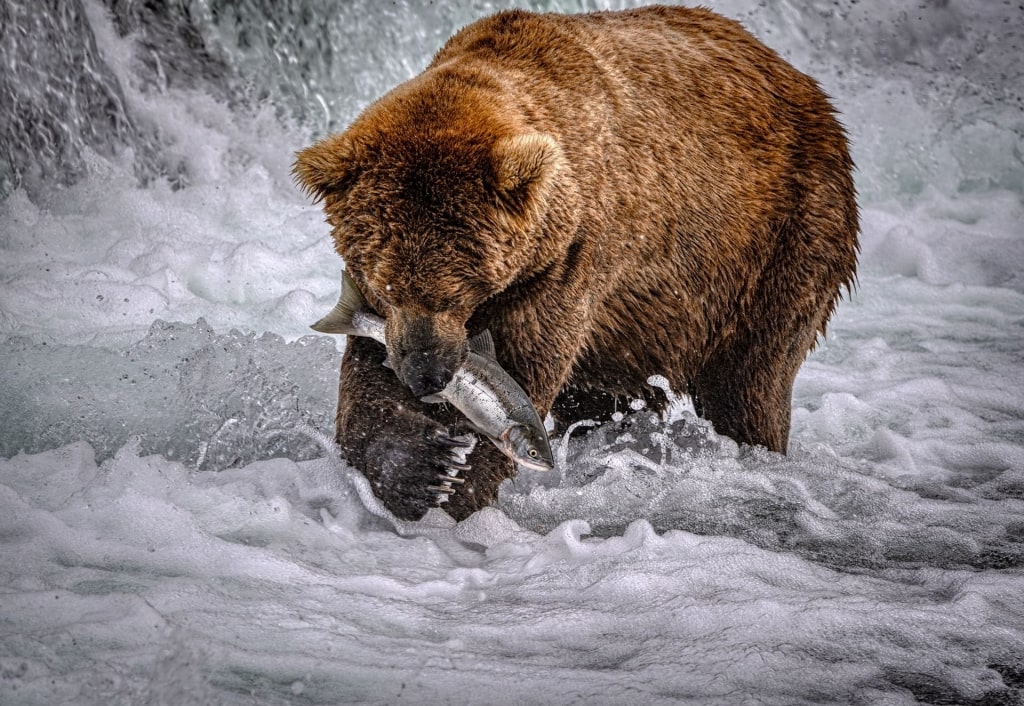
Brown bear
You’ll have a good chance of spotting a grizzly around Ketchikan, especially during salmon spawning season in June and July. Take a boat trip to Neets Bay, where there’s a salmon hatchery that attracts plentiful hungry bears. You can observe them safely from your boat while a local guide tells you all about bears and their place in Alaskan culture.
Sea Otter
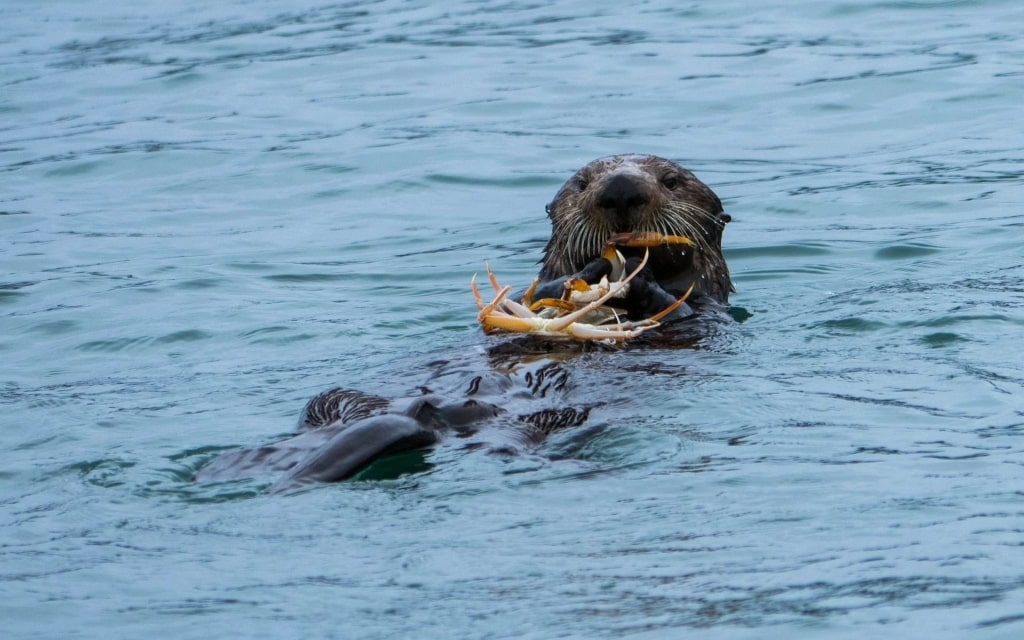
Sea otter
The sea otter is one of the most enchanting animals in Alaska thanks to its cute, teddy bear appearance. You’ll see otters bobbing on their backs in the water, a pup often hitching a ride on its mother’s belly.
The sea otter is highly adapted to its environment, with two layers of dense fur for warmth and webbed feet for swimming. Adults may be as long as five feet, and a big male can weigh 100 pounds, although females are considerably smaller.
You’ll spot sea otters all along the coast of southern Alaska, often close to the shore; Seward and Sitka both have healthy populations. While there are an estimated 20,000 individuals in Alaska, the sea otter is still classified as threatened, having been hunted for its pelt almost to extinction in the 19th century. Luckily, the population is re-establishing itself now.
Salmon
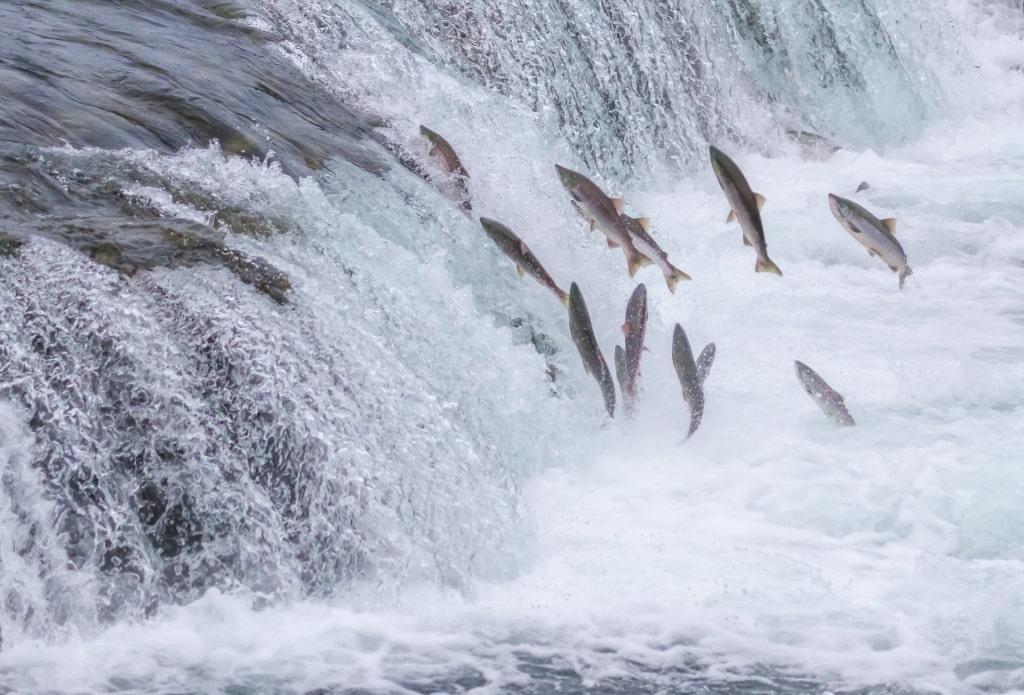
Salmon
You can’t visit Alaska without spotting—and eating—salmon. Five types of the fish inhabit the clean waters here: king, coho, keta, pink, and sockeye. All of them return to the state’s crystal-clear streams in summer to fight their way upstream from the sea to spawn.
A salmon run is an awe-inspiring sight, the water alive with thrashing fish, flinging themselves over one another, flipping and leaping in their attempt to swim upstream. Trying to catch one brings the notion of “shooting fish in a barrel” to mind; even the novice angler can become an expert in no time.
There’s more to a fishing trip than the catch, though. Salmon is inextricably bound to Alaskan culture, and the captain of any fishing boat will explain the ecology of the fish and its role in Alaska’s commerce and history. And whether or not you choose to fish, it’s hard to beat the flavors of a salmon bake in the forest, cooked over an alder wood fire and washed down with a local beer.
Alaskan Husky
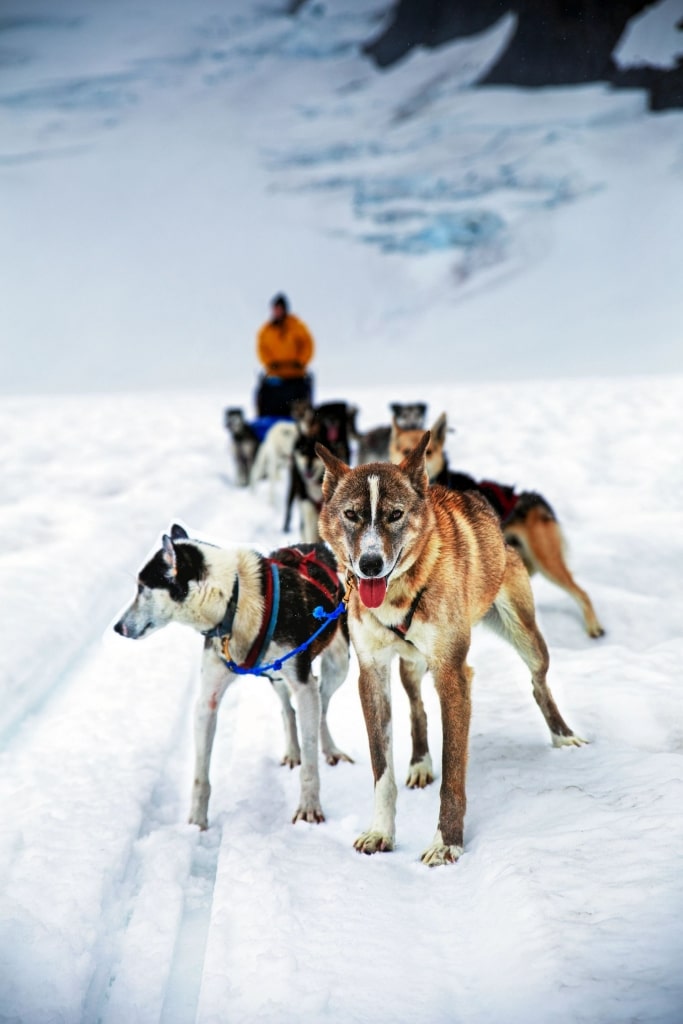
Alaskan husky
Strong, loyal, and intelligent, the Alaskan husky isn’t a pure breed as such; there’s anything from Siberian husky to greyhound and pointer in the genetic mix. These huskies are bred as working dogs, prized for their speed, strength, and endurance, specifically for dog sled racing, one of the best things to do in Alaska.
They do make great pets if you’ve got the energy to exercise them. However, they prefer to live outside in packs. Any visit to a husky kennel in Alaska will demonstrate how friendly these dogs are, your arrival greeted by barking, howling, and tail-wagging.
Huskies love to work, and you can experience the thrill of dog sledding on an actual glacier on a very special excursion from Juneau. Fly by helicopter over the forest and mountains to Dog World, a high-altitude camp where you’ll get an insight into the life of a dog musher.
Once the dogs are harnessed and booted up, you’ll experience an exhilarating, five-mile dash across the snow and ice. After the ride, you can help feed the dogs and learn about their care, as well as the experience of spending the whole summer living on a glacier.
Wolf
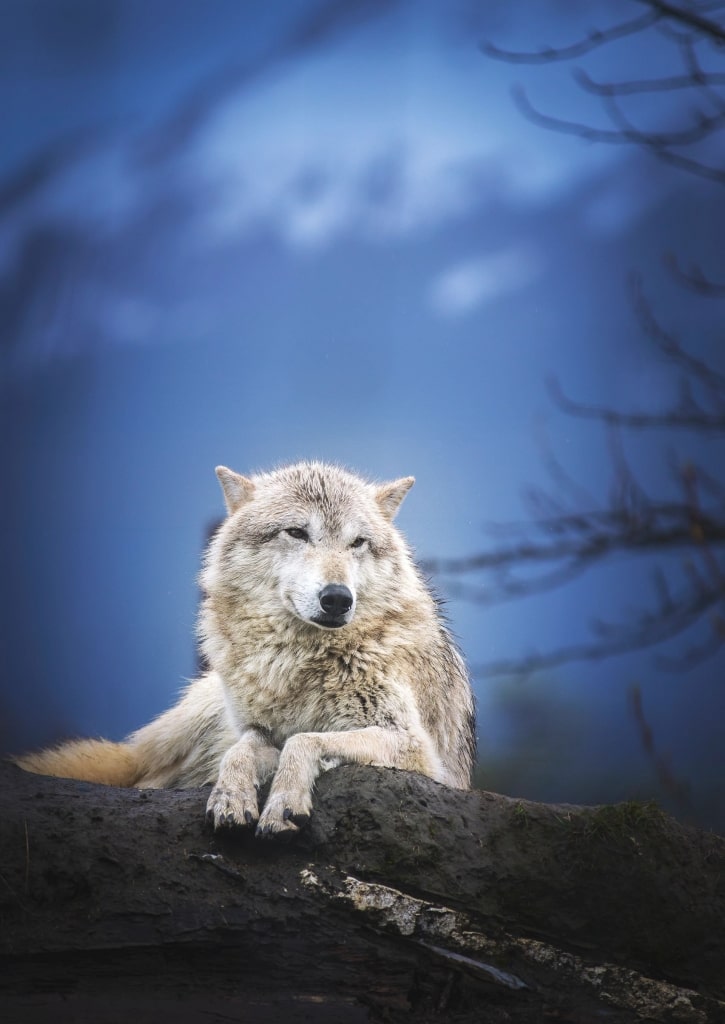
Wolf
Despite their ferocious reputation, wolves are actually shy, elusive animals, which makes spotting one all the more rewarding. To Native Alaskans, the wolf symbolizes the spirit of wildness, and you’ll often see the animal depicted in the art of totem poles.
Wolves live in packs of six or more with a strict hierarchy governed by the alpha male and female, the only breeding pair in the pack. They’re common over much of Alaska, particularly in the forests and on the tundra of Denali National Park.
Otherwise, the highest densities occur in the southeast, where Sitka black-tailed deer serve as an important food source. Wolves will also eat salmon in season, particularly when they are raising pups. Otherwise, they feed on other mammals, from caribou to Dall sheep, deer, beaver, and mountain goat.
They’re most active at night and are known for their spine-chilling howl. But contrary to popular belief, wolves don’t howl at the moon; they’re simply communicating with one another.
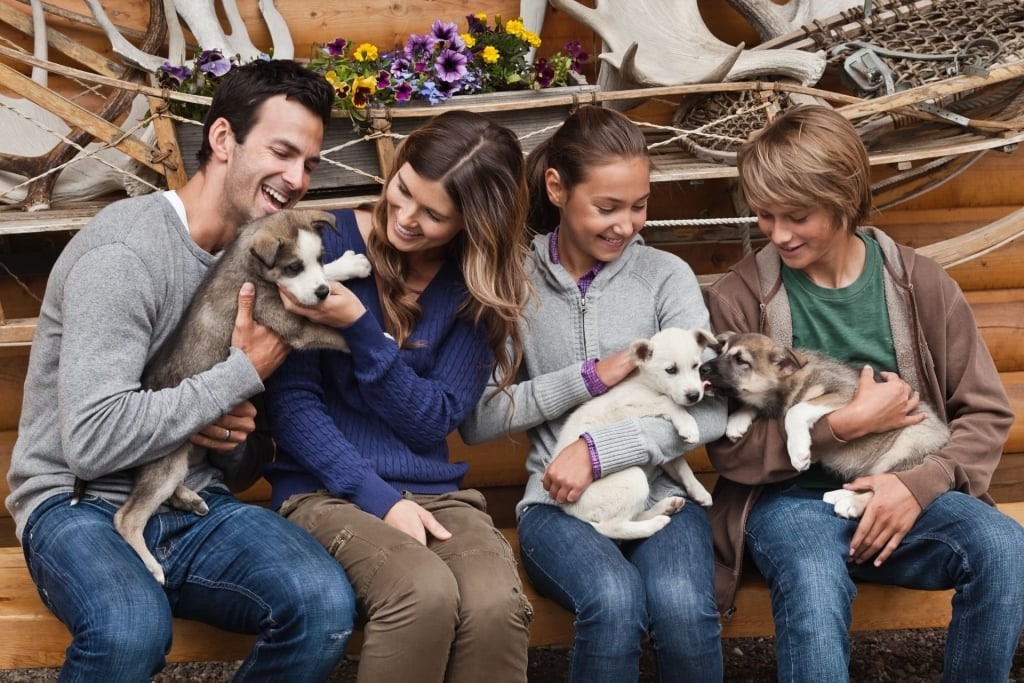
Alaska
Ready to discover the incredible animals of Alaska for yourself? There’s no better way to experience the state’s pristine beauty than from a cruise. Browse our range of cruises to Alaska and plan your next wilderness adventure.
